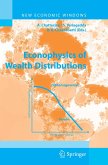The present book outlines a conceptual framework for modelling and forecasting the dynamics of both growth-limited cities and megacities bringing together experts from several disciplines. The interdisciplinary point of view is particularly stressed. The contributions presented reflect the various interdependencies between structural (physics and mathematics models) and social development (spatial decision making and urban planning models). The volume emphasizes not only the contributions from different disciplines but also pays attention to specific problems like model calibration, data availability and management, case studies and interactions with urban planners. It is the collection of all the contributions of the speakers at the international workshop "The Dynamics of Complex Urban Systems: an interdisciplinary approach" held at Monte Verità (Ascona/Switzerland) from 4th to 6th of November 2004.
Dieser Download kann aus rechtlichen Gründen nur mit Rechnungsadresse in A, B, BG, CY, CZ, D, DK, EW, E, FIN, F, GR, HR, H, IRL, I, LT, L, LR, M, NL, PL, P, R, S, SLO, SK ausgeliefert werden.
From the reviews: "'The Dynamics of Complex Urban Systems' is about ... new kind of science, and how we might use it to improve our understanding of urban growth and change. ... the collection is an excellent combination of model-oriented discussions, relevant data issues and various case studies involving interactions with urban planners. ... it provides a collection of starting points for researchers who are seriously interested in applying some of the toolkit of complex systems science to study the possible evolution of urban form." (David F. Batten, Papers in Regional Science, Vol. 87 (4), November, 2008)









